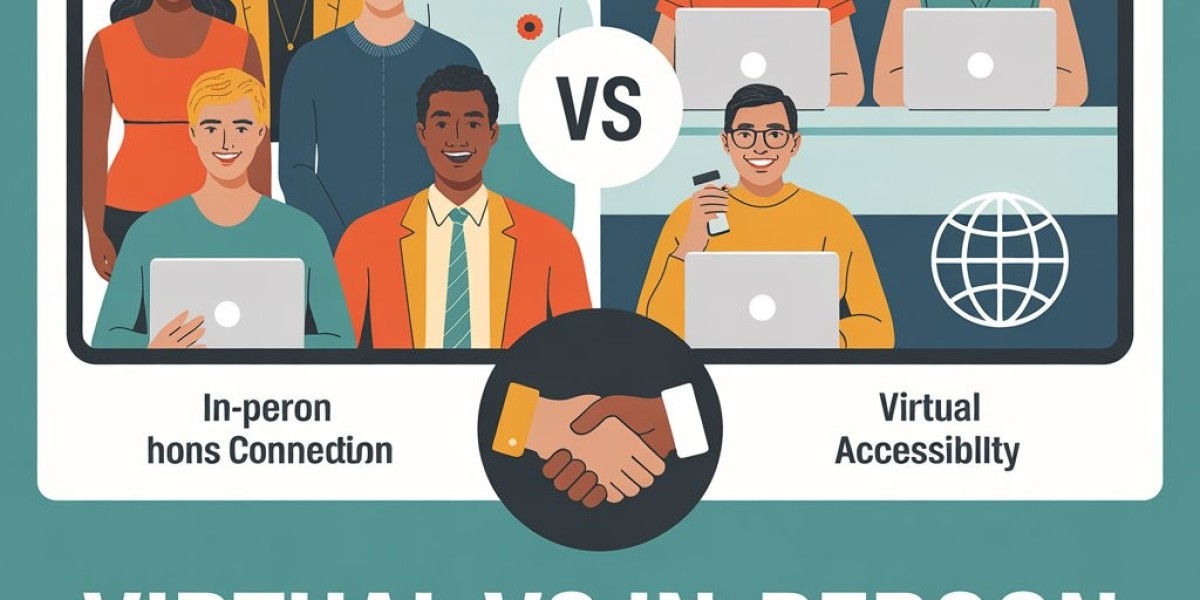The world of market research has changed a lot recently. Now you have many ways to share your thoughts with companies that want your feedback. Should you join a research study online or go to one in person? Let's look at what each option is really like for participants.
For years, companies have gathered people in a room to discuss products. You'd travel to a building and sit with strangers around a table.
Then technology changed everything. Video calls and online tools made virtual research possible. When COVID hit, almost all research moved online overnight. Now, both in-person and online options are popular, and each has its good and bad points.
Know How The In-Person Focus Groups Feel Like
You Get To Experience The Social Side
When you join traditional focus groups in person, you're in the same room with other people. You can see their reactions, notice when someone wants to speak, and feel the energy of a real conversation. Many people find these discussions flow more naturally than online chats.
Breaking Away From The Typical Environment
In-person sessions happen in special research rooms designed to be comfortable and free from distractions. Getting away from your daily life can help you focus completely on the discussion. Many participants say this change of scenery helps them think differently.
Trying Products Firsthand
One big advantage of in-person research is getting to touch, try, taste, or test actual products. Whether it's food, technology, or packaging, you can interact with items in ways that just aren't possible through a computer screen.
You Get The Extras Too!
Most in-person sessions offer snacks, drinks, or even meals. While this might seem small, many participants appreciate these touches that make the experience more pleasant.
The Cons of In-Person Sessions
In-person sessions can take a lot of time. You don’t just spend time talking. You also have to get ready and travel to the place. Research shows people spend around 78 minutes just getting prepared and going to in-person sessions.
The location also makes a difference. If someone doesn’t live nearby, they probably won’t be able to join at all.
Some people also feel shy. It can be hard to speak up in front of strangers, especially when the topic is personal.
What Virtual Focus Groups Are Like
Super Convenient
The biggest plus of virtual paid focus groups is convenience. You can join from anywhere with internet. No driving, no parking, no traffic. Research shows online participants spend just 13 minutes getting ready compared to 78 minutes for in-person sessions.
No Location Limits
Virtual sessions let you join studies happening anywhere in the country or even worldwide. This opens up many more opportunities to participate in topics you care about.
The Comfort Factor
Many people feel more relaxed joining from home. You're in your own space, wearing what you want, sitting how you want. This comfort often helps people speak more openly, especially about personal topics.
More Privacy
The distance created by screens gives some people the confidence to share thoughts they might hold back in person. Studies show people are more likely to disagree or share contrary opinions in text-based online groups than they would face-to-face.
Online Surveys: Another Option
While focus groups involve live discussion, online surveys let you answer questions on your own time. These questionnaires are quick to complete, available anytime, completely private, and done at your own pace.
The downside is you don't get to discuss ideas with others or build on their thoughts. Many people do both paid focus groups and online surveys, depending on their schedule and preferences.
What If I Join Focus Groups Virtually?
Pros of Virtual Participation
The freedom to join from anywhere with internet opens up many more opportunities. Minimal preparation time means you can often log in just minutes before the session starts. Being in familiar surroundings typically makes people more comfortable sharing honest opinions. The distance creates greater anonymity for sensitive topics that might be hard to discuss face-to-face. You gain access to research opportunities across the country or even globally.
Cons of Virtual Participation
Technical problems can disrupt sessions and create frustration for everyone involved. Home distractions can interfere with your ability to focus fully on the discussion. You miss many nonverbal communication cues that help create understanding. Building rapport with other participants takes more effort in virtual settings. The inability to physically interact with products limits certain types of research.
You Need To Choose What Works for You
When deciding between virtual and in-person research, think about how much time you can spare and where you live relative to research facilities. Consider how comfortable you are speaking in groups versus from behind a screen. Your tech setup and comfort with technology matter for virtual sessions. Some studies require testing physical products, which work better in person.
The Side Note
As technology keeps improving, we'll see even more options for sharing feedback with companies. Some studies now blend online and in-person elements to get the best of both worlds.
What matters most is that your voice gets heard. Whether you're sitting in a research facility, joining from your couch, or filling out online surveys during lunch, your opinions help shape the products and services companies create.
Participating in market research is easier than ever in 2025. At FocusGroups.org, participants gain access to hundreds of paid focus groups each month, both virtual and in person, matching their preferences and schedule. We connect real people with brands seeking authentic feedback!






